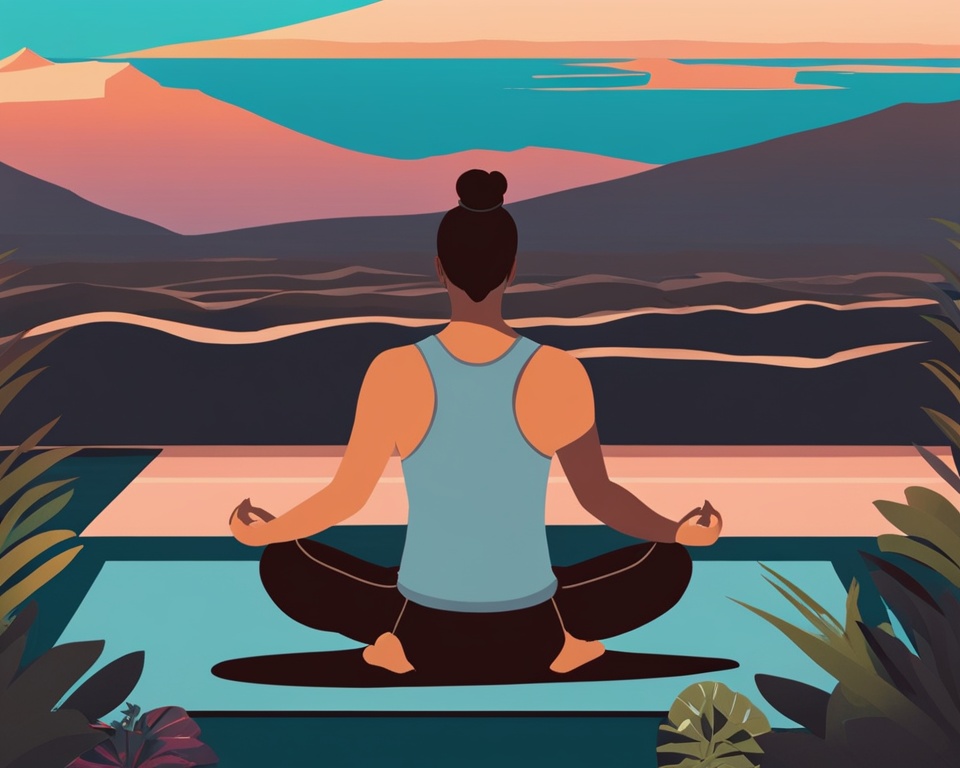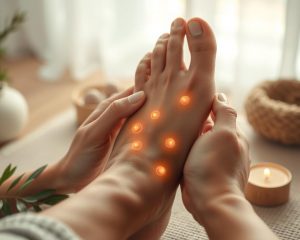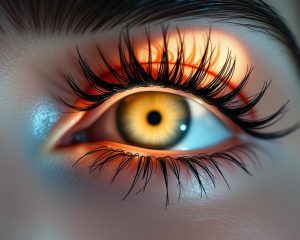
Mental wellness is a crucial aspect of our overall well-being, yet it can often be overlooked or neglected in the hustle and bustle of daily life. Fortunately, relaxation therapy offers a powerful solution for individuals seeking to improve their mental health and well-being. This comprehensive article delves into the role of relaxation therapy in promoting mental wellness, exploring a variety of evidence-based techniques that can be seamlessly incorporated into daily routines.
From mindfulness and deep breathing exercises to progressive muscle relaxation and guided imagery, this article provides readers with a comprehensive understanding of the various relaxation practices that can alleviate symptoms of anxiety, depression, and stress. By uncovering the benefits and practical application of these techniques, readers will be equipped with the knowledge and tools necessary to take an active role in their mental health journey, ultimately leading to improved overall well-being.
Whether you’re seeking to manage the demands of a fast-paced lifestyle or simply desire to cultivate a greater sense of inner peace, this article will guide you through the transformative power of relaxation therapy. From yoga for stress relief and meditation for anxiety to biofeedback therapy and stress management strategies, you’ll discover a wealth of effective techniques to help you relax your mind and achieve mental wellness.
Read more interesting information at ::102aoki
Introduction to Relaxation Therapy
Relaxation therapy is a holistic approach to mental health that encompasses a range of techniques aimed at eliciting the body’s relaxation response. These techniques, which include mindfulness techniques, deep breathing exercises, progressive muscle relaxation, guided imagery, yoga, meditation, and biofeedback therapy, work to reduce physiological arousal and promote a state of calm, both physically and mentally.
What is Relaxation Therapy?
Relaxation therapy is a therapeutic intervention that focuses on activating the body’s natural relaxation response, which is the opposite of the stress response. By engaging in various relaxation practices, individuals can learn to manage their stress, anxiety, and other mental health concerns more effectively. The goal of relaxation therapy is to help individuals achieve a state of deep physical and mental calm, enabling them to better cope with the challenges of daily life.
Benefits of Relaxation Therapy
The benefits of incorporating relaxation therapy into one’s mental health regimen are numerous and well-documented. Regular practice of relaxation techniques can lead to reduced anxiety and stress, improved mood, enhanced sleep quality, increased self-awareness and emotional regulation, and better overall mental well-being. By understanding the fundamental principles of relaxation therapy, individuals can better equip themselves to explore and integrate these practices into their daily lives, empowering them to take an active role in their mental health journey.
Mindfulness Techniques
Mindfulness techniques play a crucial role in relaxation therapy, enabling individuals to cultivate present-moment awareness and acceptance. By incorporating mindfulness into their daily lives, people can experience a calmer mind, reduced mental chatter, and a greater sense of emotional well-being.
Mindfulness Meditation
Mindfulness meditation is a powerful practice that encourages individuals to focus their attention on the breath, bodily sensations, or other present-moment experiences. This technique helps to quiet the mind, promote acceptance, and foster a non-judgmental attitude towards thoughts and emotions. Regular mindfulness meditation has been shown to reduce symptoms of anxiety, depression, and stress, ultimately leading to improved mental health and overall well-being.
Body Scan Meditation
Body scan meditation is another mindfulness-based practice that involves systematically directing attention to different parts of the body. This technique helps individuals become more aware of physical sensations, tensions, and areas of relaxation within the body. By focusing on the breath and sensations in the body, practitioners can achieve a deeper state of physical and mental relaxation, which can have a profound impact on their mental health and emotional regulation.
Incorporating mindfulness techniques, such as mindfulness meditation and body scan meditation, into one’s daily routine can provide a powerful tool for managing stress, enhancing emotional regulation, and cultivating a greater sense of inner calm and well-being. By learning to be present in the moment and accepting thoughts and feelings without judgment, individuals can unlock the transformative benefits of mindfulness for their mental health.
Deep Breathing Exercises
Incorporating deep breathing exercises into your daily routine can be a powerful tool for relaxation therapy in mental health. This simple yet highly effective technique can trigger the body’s relaxation response, reducing physiological arousal and promoting a state of calmness.
One of the most common deep breathing methods is diaphragmatic breathing, also known as belly breathing. To practice this, sit or lie down in a comfortable position, and focus on taking deep, slow breaths, allowing your abdomen to expand as you inhale and contract as you exhale. Aim for a steady, rhythmic breathing pattern, with a longer exhalation than inhalation.
Another effective deep breathing technique is the 4-7-8 breathing method. This involves inhaling for 4 seconds, holding the breath for 7 seconds, and then exhaling for 8 seconds. Repeat this cycle several times, focusing on the sensation of the breath moving in and out of your body.
Incorporating these deep breathing exercises into your daily routine can have numerous benefits for your mental well-being. Regular practice can help reduce stress and anxiety, improve sleep quality, and enhance emotional regulation, leading to a greater sense of overall calm and relaxation.
| Deep Breathing Technique | Description | Benefits |
|---|---|---|
| Diaphragmatic Breathing | Slow, deep breaths that expand the abdomen | Reduced stress, improved relaxation, enhanced respiratory function |
| 4-7-8 Breathing | Inhale for 4 seconds, hold for 7 seconds, exhale for 8 seconds | Calms the mind, lowers blood pressure, promotes better sleep |
By incorporating these deep breathing exercises into your daily routine, you can harness the power of relaxation therapy to support your overall mental health and well-being. Remember to be patient and consistent with your practice, as the benefits of these techniques often compound over time.
Progressive Muscle Relaxation
Progressive muscle relaxation (PMR) is a powerful relaxation technique that involves systematically tensing and releasing different muscle groups throughout the body. This methodical process helps individuals become more aware of muscle tension and learn to consciously relax their bodies, leading to a range of mental health benefits.
How to Perform Progressive Muscle Relaxation
To practice PMR, start by finding a quiet and comfortable place to sit or lie down. Begin by focusing on your breathing, taking slow, deep breaths. Then, gradually tense and release different muscle groups, one at a time, starting from your toes and working your way up to your head. As you tense each muscle group, hold the tension for a few seconds, then slowly release and feel the muscle relaxing. Repeat this process for all major muscle groups, including your hands, arms, shoulders, neck, and facial muscles. With regular practice, you’ll become more adept at recognizing and releasing muscle tension, effectively triggering the body’s relaxation response.
Benefits of Progressive Muscle Relaxation
Incorporating progressive muscle relaxation into your daily routine can provide a range of mental health benefits. By learning to identify and release physical tension, you can experience reduced stress and anxiety, improved sleep quality, and better emotional regulation. Furthermore, progressive muscle relaxation can enhance self-awareness and mindfulness, allowing you to better manage your thoughts and feelings. This versatile relaxation technique can be a valuable tool in your mental health toolkit, complementing other relaxation therapies such as mindfulness, deep breathing, and guided imagery.
Guided Imagery
Guided imagery is a relaxation technique that harnesses the power of the imagination to promote a state of calmness and well-being. This approach involves the creation of mental images or visualizations that evoke a sense of peace and tranquility, thereby eliciting the body’s relaxation response and reducing physiological arousal.
What is Guided Imagery?
At its core, guided imagery involves the practice of consciously creating vivid mental pictures or scenes that are designed to induce a state of relaxation. This process typically begins with the guidance of a practitioner or audio recording, which helps the individual focus their attention on a specific image or scenario, such as a serene natural setting or a peaceful personal sanctuary.
By immersing themselves in these imagined environments, individuals can effectively disconnect from the stressors and anxieties of everyday life, replacing them with a sense of calm and inner peace. The power of guided imagery lies in its ability to engage the mind’s capacity for visualization, tapping into the connection between the mind and the body to promote relaxation and well-being.
Benefits of Guided Imagery
Numerous studies have demonstrated the numerous benefits of incorporating guided imagery into a relaxation therapy regimen. Some of the key advantages of this practice include:
- Reduced Anxiety: Guided imagery has been shown to effectively lower anxiety levels by shifting the focus away from worrying thoughts and towards more calming and positive mental imagery.
- Improved Mood: The act of visualizing pleasant and uplifting scenes can help boost mood and emotional well-being, leading to a greater sense of overall contentment and positivity.
- Enhanced Pain Management: Guided imagery has been used successfully in the management of chronic pain, as the visualization of soothing and healing images can help reduce the perception of physical discomfort.
- Increased Relaxation: By evoking a sense of tranquility and peacefulness, guided imagery can effectively trigger the body’s relaxation response, lowering physiological arousal and promoting a state of calm.
Integrating guided imagery into one’s relaxation therapy regimen can be a powerful tool for improving mental health and well-being, offering a unique avenue for individuals to explore the restorative power of the mind-body connection.
Yoga for Stress Relief
Yoga has long been recognized as a powerful tool for relaxation therapy and stress management. This ancient practice, rooted in both physical and mental disciplines, offers a holistic approach to promoting mental well-being and alleviating the symptoms of stress, anxiety, and depression.
Types of Yoga for Stress Relief
When it comes to yoga for stress relief, certain styles and practices stand out for their ability to induce a deep state of relaxation. Gentle yoga, restorative yoga, and yin yoga are particularly effective in this regard. These forms of yoga emphasize slow, mindful movements, extended hold times, and the use of props to support the body, allowing practitioners to let go of physical and mental tension.
Gentle yoga, for instance, focuses on basic postures and breath work, making it an accessible option for beginners or those seeking a more calming practice. Restorative yoga, on the other hand, utilizes supported poses and extended relaxation periods to facilitate deep rest and rejuvenation. Yin yoga targets the connective tissues, promoting flexibility and a sense of release through long-held, passive postures.
Benefits of Yoga for Mental Health
Incorporating yoga for stress relief into one’s routine can have a profound impact on mental health. Regular yoga practice has been shown to reduce symptoms of anxiety and depression, improve mood, and enhance overall emotional well-being.
The mindfulness and breath-focused elements of yoga help cultivate present-moment awareness, allowing practitioners to better manage intrusive thoughts and emotional reactivity. Additionally, the physical postures and movements can trigger the body’s relaxation response, lowering physiological arousal and promoting a sense of calm.
Numerous studies have also found that yoga can enhance cognitive function, increase self-awareness, and improve emotion regulation – all crucial components of maintaining good mental health. By integrating yoga into their lives, individuals can tap into a powerful tool for stress relief and overall mental wellness.

Meditation for Anxiety
Meditation has long been recognized as a powerful relaxation technique, and its benefits extend to individuals struggling with anxiety. This section explores the various types of meditation that can be particularly effective in addressing anxiety, providing readers with the knowledge and tools to incorporate these practices into their lives.
Types of Meditation for Anxiety
One of the most well-known and widely practiced forms of meditation for anxiety is mindfulness meditation. This technique involves focusing one’s attention on the present moment, cultivating a non-judgmental awareness of thoughts, emotions, and physical sensations. By training the mind to stay grounded in the here and now, mindfulness meditation can help individuals manage the racing thoughts and worries that often accompany anxiety.
Loving-kindness meditation, also known as metta meditation, is another powerful tool for addressing anxiety. This practice involves cultivating feelings of compassion, kindness, and goodwill towards oneself and others, which can help alleviate feelings of fear, worry, and isolation often associated with anxiety.
Additionally, body scan meditation can be highly effective for individuals with anxiety. This technique involves systematically directing attention to different parts of the body, promoting a greater awareness of physical sensations and a deeper state of relaxation. By tuning into the body’s cues, individuals can learn to better manage the physiological symptoms of anxiety, such as muscle tension and rapid breathing.
Incorporating these various types of meditation into a regular practice can provide individuals with the tools they need to navigate the challenges of anxiety. By learning to quiet the mind, cultivate self-compassion, and connect with the body, those struggling with anxiety can find a greater sense of calm, control, and resilience.
Biofeedback Therapy
Biofeedback therapy is a unique relaxation technique that harnesses the power of technology to help individuals gain greater self-awareness and control over their physiological responses. This innovative approach involves the use of electronic devices that provide real-time feedback on various bodily functions, such as heart rate, muscle tension, and skin temperature.
How Does Biofeedback Therapy Work?
During a biofeedback session, sensors are attached to the individual’s body, which measure and monitor their physiological signals. These measurements are then displayed on a screen or communicated through audio or visual cues, allowing the individual to observe and become more aware of their body’s reactions. By focusing on these feedback signals, the individual can learn to consciously regulate and control their physiological responses, ultimately achieving a state of deeper relaxation and emotional regulation.
Benefits of Biofeedback Therapy
Biofeedback therapy has been shown to offer a range of benefits for individuals seeking relaxation and improved mental health. By providing real-time feedback and enabling better self-regulation, biofeedback can help reduce stress, anxiety, and muscle tension, leading to enhanced emotional well-being and overall quality of life. Additionally, biofeedback therapy has been effective in managing chronic pain, improving sleep quality, and increasing self-awareness and self-control. As a biofeedback therapy becomes more accessible and integrated into mental health treatment plans, it offers a promising approach for individuals seeking to relax their mind and improve their mental health through the power of self-regulation and technology-assisted relaxation.
Relaxation Therapy in Mental Health
Relaxation therapy plays a crucial role in promoting overall mental health and well-being. The various techniques discussed throughout this article, such as mindfulness, deep breathing, progressive muscle relaxation, guided imagery, yoga, meditation, and biofeedback therapy, can be effectively employed to alleviate the symptoms of common mental health conditions, including anxiety, depression, and stress-related disorders.
Role of Relaxation Therapy in Mental Health
By engaging in regular relaxation practices, individuals can experience a range of benefits that contribute to improved mental health. These benefits include reduced physiological arousal, decreased anxiety and worry, enhanced emotional regulation, improved mood and sleep quality, and increased self-awareness and resilience. Incorporating relaxation therapy in mental health can be a powerful tool in managing the symptoms of mental health conditions and promoting overall psychological well-being.
When to Seek Relaxation Therapy
Individuals may consider seeking out relaxation therapy in mental health in a variety of situations. Those experiencing persistent stress, anxiety, or depression may find that incorporating relaxation techniques as part of a comprehensive treatment plan can significantly improve their symptoms and overall quality of life. Additionally, individuals dealing with chronic pain, trauma, or other mental health challenges may benefit from the calming and grounding effects of relaxation therapy. It is important to consult with a qualified mental health professional to determine the appropriate role of relaxation therapy within a personalized treatment approach.

Stress Management Strategies
Effective stress management is a critical component of maintaining mental health and overall well-being. In this section, we will explore strategies for identifying stress triggers and developing a comprehensive stress management plan that incorporates relaxation therapy and other evidence-based practices.
Identifying Stress Triggers
The first step in managing stress is to recognize the specific factors that contribute to your feelings of overwhelm and anxiety. Take time to reflect on your daily routines, relationships, work demands, and life events to identify the primary sources of stress management strategies. Pay attention to the physical, emotional, and behavioral cues that indicate when you are experiencing elevated levels of stress. This self-awareness will enable you to develop targeted interventions to address the root causes of your stress.
Developing a Stress Management Plan
Once you have identified your stress triggers, it is essential to create a personalized stress management strategies plan. This plan should incorporate a variety of techniques, including relaxation therapy in mental health, to help you effectively manage stress and promote overall mental well-being. Consider incorporating the following elements into your stress management plan:
- Regular practice of relaxation techniques, such as deep breathing exercises, progressive muscle relaxation, or guided imagery
- Mindfulness-based practices, including meditation or yoga, to enhance present-moment awareness and emotional regulation
- Lifestyle modifications, such as prioritizing self-care, improving sleep habits, and engaging in physical activity
- Seeking support from mental health professionals or joining a support group, if needed
- Developing effective time management strategies to manage competing demands and prevent burnout
By implementing a comprehensive stress management strategies plan, you can take proactive steps to mitigate the negative impact of stress on your mental health and cultivate a greater sense of resilience and well-being.
Incorporating Relaxation Therapy into Daily Routine
Integrating relaxation therapy into your daily routine is crucial for reaping its long-term mental health benefits. By making relaxation practices a consistent part of your lifestyle, you can cultivate a sense of calm, improve emotional regulation, and foster greater overall well-being. In this section, we’ll explore practical tips and strategies to help you seamlessly incorporate relaxation therapy into your daily life.
Tips for Making Relaxation Therapy a Habit
Establishing relaxation therapy as a habit requires intentionality and consistency. Here are some tips to help you make it a regular part of your routine:
- Schedule dedicated time: Set aside a specific time each day, even if it’s just 10-15 minutes, to engage in relaxation practices. Treating it as an important appointment can help create a sense of commitment.
- Integrate into existing routines: Find ways to seamlessly integrate relaxation techniques into your daily activities, such as practicing deep breathing exercises during your commute or incorporating mindfulness during your morning coffee break.
- Make it enjoyable: Experiment with different relaxation methods to discover the ones that resonate most with you. Finding relaxation practices that you genuinely enjoy can increase your motivation to stick with them.
- Seek support: Enlist the help of family, friends, or a mental health professional to hold you accountable and provide encouragement as you incorporate relaxation therapy into your life.
Overcoming Barriers to Relaxation Therapy
Despite the numerous benefits of relaxation therapy, some individuals may face barriers to incorporating it into their daily lives. Here are some common challenges and strategies to overcome them:
| Barrier | Strategies |
|---|---|
| Lack of time |
|
| Low motivation |
|
| Limited resources |
|
By addressing these barriers and implementing practical strategies, you can set yourself up for success in making relaxation therapy a sustainable part of your daily routine. Embracing these techniques can have a profound and lasting impact on your mental health and overall well-being.
Resources for Relaxation Therapy
As you embark on your journey to incorporate relaxation therapy into your life, it’s important to have access to reliable resources and guidance. This section will provide you with valuable information on finding qualified professionals and exploring various online tools to support your practice.
Finding a Qualified Relaxation Therapist
Connecting with a skilled relaxation therapist can be a transformative experience. These professionals are trained in a variety of relaxation techniques, including mindfulness, deep breathing, progressive muscle relaxation, guided imagery, and biofeedback therapy. When searching for a qualified relaxation therapist, consider the following factors:
- Credentials and specialized training in relaxation therapy or related fields, such as clinical psychology, counseling, or integrative health.
- Experience working with individuals or groups to incorporate relaxation practices into their overall mental health and wellness regimen.
- Positive reviews and recommendations from previous clients or healthcare providers.
- Availability of in-person sessions or virtual/telehealth options to accommodate your preferences and lifestyle.
Online Resources and Apps
In addition to working with a qualified relaxation therapist, there are numerous online resources and mobile applications available to help you explore and practice relaxation techniques on your own. These digital tools can provide guided meditations, body scans, deep breathing exercises, and other relaxation-focused content, often with the convenience of accessing them from your smartphone or computer. Some popular and reputable options include:
- Mindfulness Apps: Headspace, Calm, Insight Timer, and Smiling Mind offer a wide range of mindfulness and meditation exercises tailored for relaxation and stress management.
- Guided Imagery Platforms: Apps like Relax Melodies and Sleepo provide access to a library of soothing, nature-inspired soundscapes and guided imagery recordings.
- Yoga and Meditation Websites: Websites like Yoga Journal, Gaia, and Meditation Studio offer online classes, tutorials, and resources focused on yoga, meditation, and other relaxation practices.
- Educational Resources: Websites such as the American Psychological Association (APA) and the National Institutes of Health (NIH) offer informative articles, videos, and guides on the various relaxation techniques and their benefits for mental health.
By utilizing these resources, you can explore and integrate a diverse range of relaxation therapy methods into your daily routine, supporting your overall mental well-being and stress management efforts.
Conclusion
As we’ve explored throughout this article, relaxation therapy is a powerful tool for promoting mental wellness and overall well-being. From mindfulness techniques and deep breathing exercises to progressive muscle relaxation, guided imagery, yoga for stress relief, meditation for anxiety, and biofeedback therapy, the various relaxation therapy practices discussed can have a transformative impact on your mental health.
By incorporating these stress management strategies into your daily routine, you can alleviate the symptoms of conditions like anxiety, depression, and chronic stress, while also cultivating a greater sense of inner peace, self-awareness, and emotional regulation. Remember, your mental health is just as important as your physical health, and relaxation therapy can be a vital component of your holistic approach to wellness.
We encourage you to take an active role in your mental well-being by exploring the various relaxation therapy techniques and finding the ones that resonate most with you. Embrace this journey of self-care and self-discovery, and let the transformative power of relaxation therapy guide you towards a more balanced, fulfilling, and mentally healthy life.






